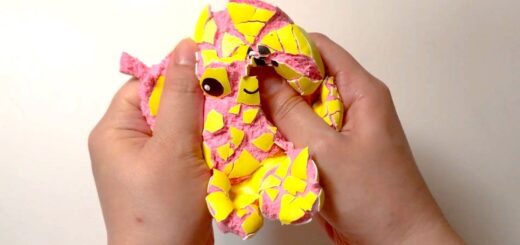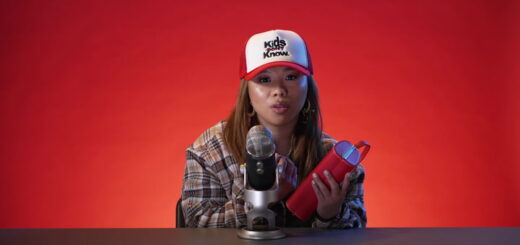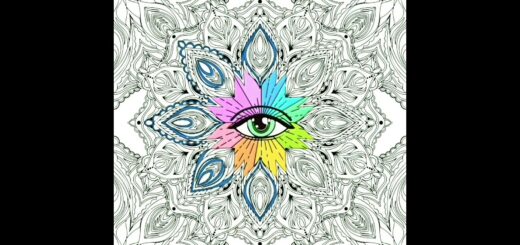ASMR for anxiety and benefits of role play ASMR in 2020
[ad_1]
Some people see twinkling lights and their whole life flash before their eyes when they pass out. For me it’s usually the same three things: A red sweater, candlelight, and a fluttering set of fingers. This isn’t a vision or buried memory, to be clear, but my favourite ASMR video on YouTube: It’s one that I’ll watch once, maybe twice before bed (which guarantees me a solid 30 or so minutes of not spiraling), and then I’ll sink into sleep.
This, as lots of drowsy YouTube viewers can confirm, is the ASMR effect. “I know the first 10 minutes of this video by heart, but I have no idea how it ends,” is a common joke among the comments on ASMR videos.
If you’re unfamiliar, ASMR is shorthand for “autonomous sensory meridian response,” a fancy term to describe the unnervingly tingly, hair-raising sensation induced by certain aural, visual, and tactile triggers. You can experience ASMR tingles in person, which anyone who’s ever had a really good scalp massage or facial may already know.
But videos are able to translate that same feeling too, through the sounds of someone slicing through a Lush unicorn soap or the soothing brushstrokes of a Bob Ross video. And through the use of triggers like roleplaying, which use point-of-view angles to make it look as if someone is actually reaching through the screen to touch you. As I’ve come to find out, ASMR videos have long been a balm for anxiety sufferers and people with insomnia because of their ability to induce feelings of deep relaxation. In the months I’ve been watching them, I’ve noticed more and more pandemic viewers in the comments section calling out how helpful these videos are for dealing with the acute anxiety of being alive in 2020.
Like so many others, I’ve been having trouble sleeping for months—sometimes wiping out from exhaustion in the middle of a Saturday or bumbling my way through a Zoom meeting on four hours of sleep. It comes with the territory, I guess, for anyone overwhelmed with the uncertainty, rage, and dread of living in a pandemic, or our modern-day police state, or the rapidly devolving state of media (pick your poison). There was also a surprise visit from a mouse in my apartment—one which, horrifyingly, crept its way into my bed—that cost me weeks of sleep and well-being.
I will admit that I knew next to nothing about ASMR before it became essential to me surviving this pandemic. For years I associated ASMR primarily with kink (a common misconception) until a viral video of Cardi B doing an ASMR Q&A for W Mag broadened my perceptions of what ASMR could be.
Part of her whole shtick is that she purrs “Okurr” into the microphone, but you can also tell, as Cardi mentions in the video, that she watches ASMR every night and knows exactly what she’s doing. The repeated syllables and air stroking are inspired, and when you watch at a certain volume, right when she starts talking about her “Bodak Yellow” single, you’re very liable to slip off into dreamland. I was hooked. Seeing it became a gateway of sorts into the larger world of whispering and soothing sounds, just when I needed it most.
After going down a rabbit hole on YouTube, I stumbled upon some ASMR videos that gave me a rare sense of calm at a time when I was finding myself triggered even by nature videos. One ASMR-tist in particular, a woman named Julia who goes by the username it’sblitzzz, has become a friend and unlikely counsellor.
She’s an “internet person,” as she sheepishly calls her vocation in one of her videos—using the catchall term to describe her role as a professional soother whose ASMR videos help relax and lull her 563,000 followers to sleep, and as a YouTube personality who alternately offers advice on everything from diet and candle DIYs to her zero-waste routine. Currently she lives in L.A. with her boyfriend and her cat, Ruby, where she likes to rescue kittens, pole dance, and make elaborate fruit plates.
In videos she credits her mother, who used to lightly massage Julia before bed to help her fall asleep, for her formative experiences with ASMR. And though she only made her first ASMR video in 2018 (after officially starting her YouTube channel 11 years ago), she’s already racked up over 116 million views.
Her extremely wholesome followers like to call her videos “premium ASMR,” and even as a recent acolyte, I have to agree. Julia’s brand of ASMR is all about self-care and simulating touch—an especially useful tool now, when many of us are feeling slightly feral and isolated, and craving physical touch. There’s also a pretend dialogue to the many role play videos on her feed, which adds an element of human connection, as if someone’s lovingly engaging in conversation with you.
In them, Julia often appears in a turtleneck with immaculately clean nails. Her face is rarely in frame, which I actually prefer—unlike other ASMR-tists who like to look right into the camera, Jim Halpert style—since the focus is more on her long graceful fingers than her gaze. And her tone is always calm and inviting, whether she’s whispering or murmuring.
Among the many ASMR services she provides, she can give you a massage or facial, brush your hair, make you a drink (or a mocktail, if you like), and say nice things about you for a solid half hour—my personal favourite. There’s also a whole series of her touching other beautiful people, if you’d prefer to live vicariously through someone else. Her fingers extended toward the camera, massaging the air, can make my entire head of hair feel as though it’s standing up on end, which—combined with the dim lighting and her dulcet tones—usually inspires a sense of bliss (as if my whole scalp is radiating warmth), then deep calm and drowsiness.
Other delights of Julia’s videos are the hyperspecific self-care additions, such as the seasonal essential oil blends that she’s mixed up “just for you.” Her wellness tool kit is pretty extensive, though, like an endless reel of things you’d find on a fancy Mother’s Day list. In a role play video, she might extend you a pair of warm pyjamas straight out the presser, or offer up a single piece of dark chocolate from the Philippines on its own crystal dish. Healthy bedtime snacks and beverages are staples in her videos, which feel extra decadent when viewed before bed.
Some details are borderline Goop-y, but I would truthfully listen to hours of Julia talking about how her tiny bottle of lilac absolute perfume is refined in a bathtub, or how her pu erh tea is picked, fermented, and pressed in China. All add to the therapeutic effect of these videos, which—as she sometimes notes—are designed to help you feel special, loved, and safe.
In an interview with the New York Times, Stephen Smith, Ph.D, a psychologist at the University of Winnipeg, explains that this type of ASMR engineers a faux intimacy: “There’s so much online that allows you to not actually interact with other human beings yet still feel close—artificially close—to other people. ASMR does that,” he said. He goes on to note that ASMR shouldn’t be your only source of human closeness, though in a global health crisis, we will take what we can get!!
In the months I’ve been living alone in my apartment since my roommate left town, untouched and willing to do unspeakable things to access a Heyday facial (or even a hug), Julia’s videos have been one of the most effective tools for keeping me company when a phone call with a friend, or a therapy session, won’t cut it.
As New York City moves into phase three of its reopening, I’m slightly more socialised than I was when I first discovered her. The protests have helped me feel some more human connection and actual proximity, and I’m starting to see friends more and more, albeit from a distance. I’m inching back toward a somewhat normal sleeping schedule, but still wary about taking up my hairdresser on his appointment reminders, or enjoying a happy hour al fresco. In isolation, there are also periodic bouts of emptiness where I yearn to feel close to someone. And for all of the above, there’s always Julia: my beautifier, bartender, and hype man, the only person who I feel comfortable having less than six feet from my face with no mask on.
In my favourite bedtime video, around the 22-minute mark, she murmurs, “Remember that you are in a safe space where you are well cared for and loved.” Hearing those words somehow always feels like being tucked into bed. (Though of course, should you want that, rest assured that there’s a video out there for you.)
Now read
How to rebuild your post-lockdown self-confidence
[ad_2]
Source by [author_name]














